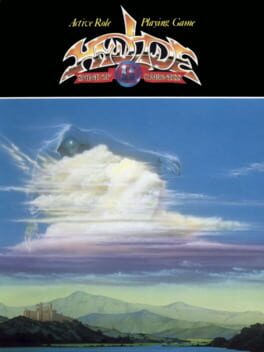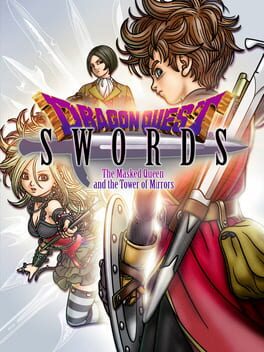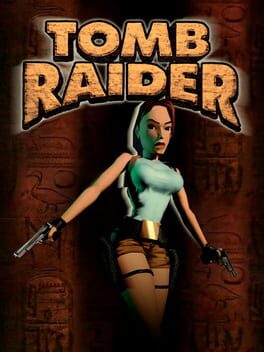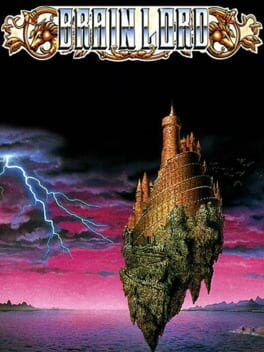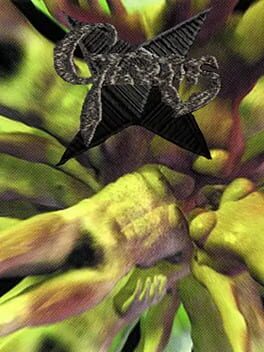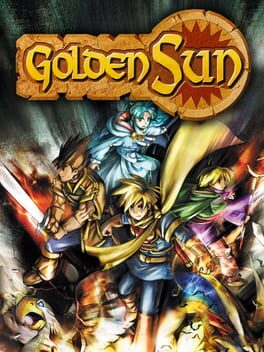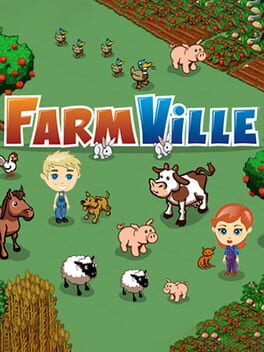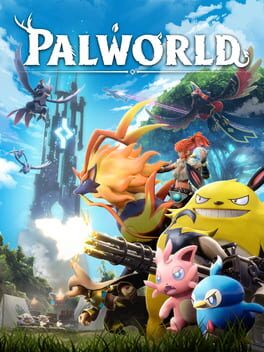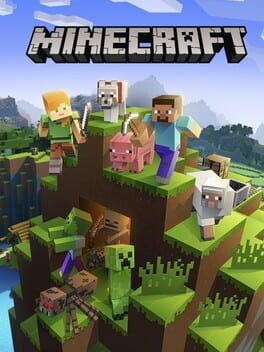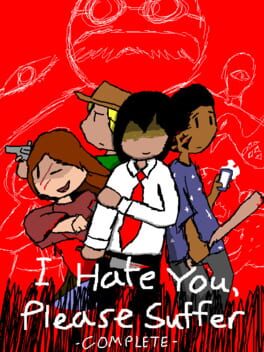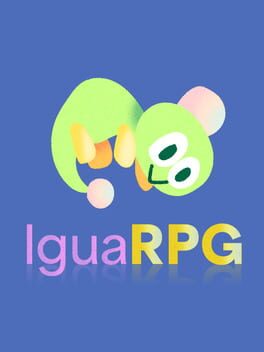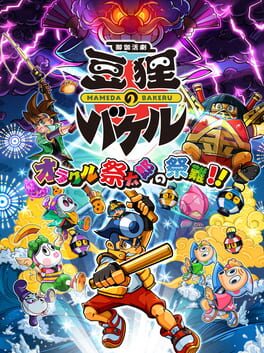MelosHanTani
BACKER
For some reason Hydlide 2 has two entries so I'm copy pasting this entry from a year ago. Because you can find God in Hydlide 2.
---
Well, I finished it... this feels even more ridiculous than Hydlide 1 did to me. Thanks to the GameFAQs guide!
First off, it's much much longer - maybe 3-4x as long as Hydlide 1? The game achieves this by dividing the game roughly into 3 acts - training in the overworld, exploring the dungeons, then diving into the final dungeon. It's an interesting structure - you basically will die in even the easiest dungeons without some MP and a few levels and equipment, which feels different than the usual RPG flow today, weaving between dungeon and overworld.
Enemies barely drop money at first, so the most feasible way to get this game to a playable state without hours of time grinding is to just use an infinite sell glitch. (Get a black crystal, then sell your whole inventory - you'll be able to sell the last item you sold over and over). Although, on reflection, it is possible to grind 'legit', but it will just take a while and it's easy to do it in a lot of wrong ways that will add hours of time.
The dungeon solutions were a lot more obscure than Hydlide 2. All switches and staircases are hidden, as well as various traps. You do get a heal spell, though, which makes going a bit easier, but you'll still be saving every screen because a bad enemy spawn could mean your death as most of the dungeons are narrow and twisty.
The overworld 'solutions' are just as bizarre: break a tombstone to allow a village to spawn, break a random rock to open a dungeon, attack a tree to find a key.
However, by the time the final dungeon rolled around it felt a bit like Hydlide 1 in the sense that I was able to actually grind in a reasonable manner, albeit slowly. Still, certain enemy behaviors and patterns (final dungeon enemies might shoot you through walls, track you very fast, block your way, put you to sleep, etc) actually felt like they were evolving with each level. I was pretty impressed in this respect. If this wasn't purely a tile-based game and had better motion actually it could be fun, maybe.
As for the dungeons.. well, most of them have the same blue brick tileset and music. The puzzles are almost all impossible to figure out without a guide, but following a guide was strangely satisfying. The movement is just unreliable enough that even following a walkthrough wasn't totally easy. Sometimes you're too low level and have to carefully maneuver around the enemies. There's all sorts of strange D&D traps that JRPGs would continue to use - poison trap rooms, trap doors, trap warps, trapped chests, hidden walls... Weird, unexpected design to the dungeons - such as one where a random spawning enemy drops the key - while impossible to clear on one's own, are memorable. Or, the mirrored dungeon where two devil twins spawn fast-moving fire elementals. Having an "action rpg" in this simple 2D perspective means that setpieces get expressed in this remarkably minimal but evocative way. (Even if it's hard to control...)
Lastly I did love (the idea) of the final dungeon. After speaking a password to a tree (lol) you can step into a puddle to be swept to a massive, underground ocean of sorts, with Kraken and Harpy-like monsters flying around. From there you dive into a massive labyrinth, its shape kind of reminiscent of a ruined castle or ruined town. There seem to be "alternate universe" versions of each floor, and you need to navigate through these to find crystals that will summon the help of a fairy, who can open a staircase to the deepest layer. It's a bit of an eerie feel, as monsters get stronger on each layer, and the rooms can feel weirdly sparse. The second-deepest layer has dragons arranged weirdly, like a triptych drawing of 'action rpg tropes'. A river of lava, some sandy ritual site, next to twisty mazes.
You progress through the game so slowly (and with such tedium) that it becomes memorable.
-
There's more of a texture to Hydlide 2's world in terms of characters. You can talk to some 'enemies' - the humanoid ones - although they'll just say some stock phrase, and you'll probably accidentally attack them while trying to get close. There's a mostly pointless morality meter, which stops you from talking to shopkeepers if it's below 30%. Nothing much is done with this, but it is funny as some nonintuitive enemies lower it (Sand Worms, Thieves). It lowers a lot faster than it goes up, and it was a real pain point for me in my first hours of the game where I thought I had to grind on zombies in the overworld until I could raise my strength and buy armor. (And I did do this, sadly...)
All over the overworld, humanoid characters run around randomly. You can kill all of them, but you shouldn't, because of the morality system... It's strange how lively and chaotic Hydlide 2's world feels compared to the first. Sure, there's no story within the game, but the game is so short that I'm happy to just imagine one and it honestly doesn't need one, too.
-
Lastly, equipment and magic. I didn't really use the spells, mostly because my emulator made it hard to press the function keys. And spells usually did like zero damage or it was hard to safely cast or aim them given how fast enemies move.
Equipment is bizarre - maxing your attack doesn't let you one-shot enemies. They'll still take a few hits at 0 HP before dying. Although you can get max gear by level 6-8 with the money glitch. Your inventory has a max capacity of 10 items, too, which is strange.. this game is strange..
-
I was kind of stuck between rating a 3 or 4. But I'm going to say 4 just because I found the game inspiring even if it's sort of bad (worse than the first, too). This game has just as much absurd stuff as Hydlide 1, but maybe its length and tedium and grinding make it more memorable? Hard to say. I guess it's got me interested in Hydlide 3, and Rune Worth (the unofficial continuation), so we'll see. The way the Hydlide series embodies so much of the 'spirit' of D&D Fantasy Action RPGs is really interesting to me, even if they're unplayable without guides and kind of awful to control lol...
For me the game froze right before I triggered the final cutscene (lol). Which feels fitting to end this game.
---
Well, I finished it... this feels even more ridiculous than Hydlide 1 did to me. Thanks to the GameFAQs guide!
First off, it's much much longer - maybe 3-4x as long as Hydlide 1? The game achieves this by dividing the game roughly into 3 acts - training in the overworld, exploring the dungeons, then diving into the final dungeon. It's an interesting structure - you basically will die in even the easiest dungeons without some MP and a few levels and equipment, which feels different than the usual RPG flow today, weaving between dungeon and overworld.
Enemies barely drop money at first, so the most feasible way to get this game to a playable state without hours of time grinding is to just use an infinite sell glitch. (Get a black crystal, then sell your whole inventory - you'll be able to sell the last item you sold over and over). Although, on reflection, it is possible to grind 'legit', but it will just take a while and it's easy to do it in a lot of wrong ways that will add hours of time.
The dungeon solutions were a lot more obscure than Hydlide 2. All switches and staircases are hidden, as well as various traps. You do get a heal spell, though, which makes going a bit easier, but you'll still be saving every screen because a bad enemy spawn could mean your death as most of the dungeons are narrow and twisty.
The overworld 'solutions' are just as bizarre: break a tombstone to allow a village to spawn, break a random rock to open a dungeon, attack a tree to find a key.
However, by the time the final dungeon rolled around it felt a bit like Hydlide 1 in the sense that I was able to actually grind in a reasonable manner, albeit slowly. Still, certain enemy behaviors and patterns (final dungeon enemies might shoot you through walls, track you very fast, block your way, put you to sleep, etc) actually felt like they were evolving with each level. I was pretty impressed in this respect. If this wasn't purely a tile-based game and had better motion actually it could be fun, maybe.
As for the dungeons.. well, most of them have the same blue brick tileset and music. The puzzles are almost all impossible to figure out without a guide, but following a guide was strangely satisfying. The movement is just unreliable enough that even following a walkthrough wasn't totally easy. Sometimes you're too low level and have to carefully maneuver around the enemies. There's all sorts of strange D&D traps that JRPGs would continue to use - poison trap rooms, trap doors, trap warps, trapped chests, hidden walls... Weird, unexpected design to the dungeons - such as one where a random spawning enemy drops the key - while impossible to clear on one's own, are memorable. Or, the mirrored dungeon where two devil twins spawn fast-moving fire elementals. Having an "action rpg" in this simple 2D perspective means that setpieces get expressed in this remarkably minimal but evocative way. (Even if it's hard to control...)
Lastly I did love (the idea) of the final dungeon. After speaking a password to a tree (lol) you can step into a puddle to be swept to a massive, underground ocean of sorts, with Kraken and Harpy-like monsters flying around. From there you dive into a massive labyrinth, its shape kind of reminiscent of a ruined castle or ruined town. There seem to be "alternate universe" versions of each floor, and you need to navigate through these to find crystals that will summon the help of a fairy, who can open a staircase to the deepest layer. It's a bit of an eerie feel, as monsters get stronger on each layer, and the rooms can feel weirdly sparse. The second-deepest layer has dragons arranged weirdly, like a triptych drawing of 'action rpg tropes'. A river of lava, some sandy ritual site, next to twisty mazes.
You progress through the game so slowly (and with such tedium) that it becomes memorable.
-
There's more of a texture to Hydlide 2's world in terms of characters. You can talk to some 'enemies' - the humanoid ones - although they'll just say some stock phrase, and you'll probably accidentally attack them while trying to get close. There's a mostly pointless morality meter, which stops you from talking to shopkeepers if it's below 30%. Nothing much is done with this, but it is funny as some nonintuitive enemies lower it (Sand Worms, Thieves). It lowers a lot faster than it goes up, and it was a real pain point for me in my first hours of the game where I thought I had to grind on zombies in the overworld until I could raise my strength and buy armor. (And I did do this, sadly...)
All over the overworld, humanoid characters run around randomly. You can kill all of them, but you shouldn't, because of the morality system... It's strange how lively and chaotic Hydlide 2's world feels compared to the first. Sure, there's no story within the game, but the game is so short that I'm happy to just imagine one and it honestly doesn't need one, too.
-
Lastly, equipment and magic. I didn't really use the spells, mostly because my emulator made it hard to press the function keys. And spells usually did like zero damage or it was hard to safely cast or aim them given how fast enemies move.
Equipment is bizarre - maxing your attack doesn't let you one-shot enemies. They'll still take a few hits at 0 HP before dying. Although you can get max gear by level 6-8 with the money glitch. Your inventory has a max capacity of 10 items, too, which is strange.. this game is strange..
-
I was kind of stuck between rating a 3 or 4. But I'm going to say 4 just because I found the game inspiring even if it's sort of bad (worse than the first, too). This game has just as much absurd stuff as Hydlide 1, but maybe its length and tedium and grinding make it more memorable? Hard to say. I guess it's got me interested in Hydlide 3, and Rune Worth (the unofficial continuation), so we'll see. The way the Hydlide series embodies so much of the 'spirit' of D&D Fantasy Action RPGs is really interesting to me, even if they're unplayable without guides and kind of awful to control lol...
For me the game froze right before I triggered the final cutscene (lol). Which feels fitting to end this game.
Oh man this is one of those cases I was so stoked to play it and then it like... feels so bad to play RIP... they should port this to mobile or something idk. Now, even if the motion controls WERE good I think there's something to be said about the RPG vocabulary not really fitting too well with the action. I think this would work better if they went in more of an arcade/action/adventure direction? Faster paced stages, quicker combat, a world map or something, etc.
2007
Edit: Maybe I'm full of shit. I want to play more of this now..
--
I liked dressing up my dog and the tonal clash of the happy Wii dog graphics and the heavy illness-focused slice of life story. Actually even sniffing around for new items was kinda fun. But the way the two fit together makes them both mutually feel heavier, and there's not really any substance to the sniffing out of items. I was kind of impressed they would put this story in a kids' game: by all means kids' games Should be about these things! But the gameplay otherwise was kind of infantilely simple.
--
I liked dressing up my dog and the tonal clash of the happy Wii dog graphics and the heavy illness-focused slice of life story. Actually even sniffing around for new items was kinda fun. But the way the two fit together makes them both mutually feel heavier, and there's not really any substance to the sniffing out of items. I was kind of impressed they would put this story in a kids' game: by all means kids' games Should be about these things! But the gameplay otherwise was kind of infantilely simple.
1996
I actually find this pretty compelling, almost relaxing. Played 2.5 stages.
The art and ambience in particular is stunning, I love the use of light and vegetation. Spatially it's like this minimalist take on early FPS shooters... the secrets, the weird score popup at the end of levels. The lack of HUD elements in gameplay and minimal save points, no guidance is really nice.
That being said! The controls are really really bad - and I don't mean the precision and slow pacing, which I think are unique and valuable, but like there's just so much bumping into walls and doing these huge moves I don't expect her to do. It's just a level too unpleasant for the vibe they're going for.
The price for dying or slipping is pretty severe (being set back minutes of tedious traversal).
But if you ignore that what you have is a really interesting 3D platformer that's all about reading the environment. It really feels 'adventure-y', although I can't help but wish for something that was a bit more compelling conceptually other than raiding ancient ruins one after another.
The art and ambience in particular is stunning, I love the use of light and vegetation. Spatially it's like this minimalist take on early FPS shooters... the secrets, the weird score popup at the end of levels. The lack of HUD elements in gameplay and minimal save points, no guidance is really nice.
That being said! The controls are really really bad - and I don't mean the precision and slow pacing, which I think are unique and valuable, but like there's just so much bumping into walls and doing these huge moves I don't expect her to do. It's just a level too unpleasant for the vibe they're going for.
The price for dying or slipping is pretty severe (being set back minutes of tedious traversal).
But if you ignore that what you have is a really interesting 3D platformer that's all about reading the environment. It really feels 'adventure-y', although I can't help but wish for something that was a bit more compelling conceptually other than raiding ancient ruins one after another.
1994
Things I Liked About Brain Lord
- Being accompanied by party members in an action RPG, but not having them at my side was a neat twist. Instead they appeared throughout dungeons, kind of reminding me I wasn't alone even though I basically was exploring alone.
- I liked its sense of personality for otherwise being a pulpy action RPG - the item descriptions, various NPCs, or just the funny things like not getting any loot from the first dungeon because your friends broke into the treasure room from the back while you went through the boss in the front. Stuff like tables being smashable, or NPC personalities being told through the decorations in their house are nice.
- The hints in the dungeons' rooms felt like.. friendly in a 4th-wall breaking way. Something funny about all the random puzzles. Idk. It felt like someone just showing me some cool stuff. I guess this didn't always help the world's overall feel, but I appreciated it didn't feel too self-serious.
- The interconnected world. I liked how it never zoomed out to show a world map, instead it just feels like there's a little tale being told about the area around these two neighboring towns. Reminded me of Ys 5's world a bit.
--
The level design style is worth noting - the game is literally two towns, a few small fields and then five 4-floor dungeons. It's funny how some of these are accessed - one through bug tunnels under the town, another through a hole someone was digging under their shop.
I think the levels' pacing felt a little long - of all things, reminding me of my game Even the Ocean (its platforming-hevay levels are usually split into 4 big chunks, played one after another). The problem with ETO was there wasn't much sense of drama going from chunk to chunk, so it could feel like 40 platforming ideas laid out end to end.
Likewise, in Brain Lord, the levels sometimes fail to feel like "climbing higher into a tower," etc. I really like the idea of these huge dungeons with warp points in between them, but there was something to be desired with actually conveying the feeling of "Tower of Light" or "Platinum Shrine" or "Ice Castle". That being said, each level DID have unique spatial qualities that made them feel like their names, it's just I think they overall start to get kind of long, with many staircases going between floors. The issue is that it starts to feel like a labyrinthine maze - fine if that's the narrative theme of the dungeon - but it's not, so there's a weirdness there.
I also have a number of complaints about combat or level design mechanics, but I'll leave those out, overall it was a charming game!
- Being accompanied by party members in an action RPG, but not having them at my side was a neat twist. Instead they appeared throughout dungeons, kind of reminding me I wasn't alone even though I basically was exploring alone.
- I liked its sense of personality for otherwise being a pulpy action RPG - the item descriptions, various NPCs, or just the funny things like not getting any loot from the first dungeon because your friends broke into the treasure room from the back while you went through the boss in the front. Stuff like tables being smashable, or NPC personalities being told through the decorations in their house are nice.
- The hints in the dungeons' rooms felt like.. friendly in a 4th-wall breaking way. Something funny about all the random puzzles. Idk. It felt like someone just showing me some cool stuff. I guess this didn't always help the world's overall feel, but I appreciated it didn't feel too self-serious.
- The interconnected world. I liked how it never zoomed out to show a world map, instead it just feels like there's a little tale being told about the area around these two neighboring towns. Reminded me of Ys 5's world a bit.
--
The level design style is worth noting - the game is literally two towns, a few small fields and then five 4-floor dungeons. It's funny how some of these are accessed - one through bug tunnels under the town, another through a hole someone was digging under their shop.
I think the levels' pacing felt a little long - of all things, reminding me of my game Even the Ocean (its platforming-hevay levels are usually split into 4 big chunks, played one after another). The problem with ETO was there wasn't much sense of drama going from chunk to chunk, so it could feel like 40 platforming ideas laid out end to end.
Likewise, in Brain Lord, the levels sometimes fail to feel like "climbing higher into a tower," etc. I really like the idea of these huge dungeons with warp points in between them, but there was something to be desired with actually conveying the feeling of "Tower of Light" or "Platinum Shrine" or "Ice Castle". That being said, each level DID have unique spatial qualities that made them feel like their names, it's just I think they overall start to get kind of long, with many staircases going between floors. The issue is that it starts to feel like a labyrinthine maze - fine if that's the narrative theme of the dungeon - but it's not, so there's a weirdness there.
I also have a number of complaints about combat or level design mechanics, but I'll leave those out, overall it was a charming game!
Game with a relatable story about going back to your hometown in adulthood and it REALLY sucks, not because anything's changed with the cute old map-shop couple living across the street, or the curry special at the local diner, but because you've had cinder blocks tied to your feet causing you to walk at a glacial pace, and your good old friend Fujita hasn't gotten into conspiracy theories or MLMs, but building space-time exporation devices he insists you to check 'the vibrations out'. He breaks you into a power plant, you meet aliens, and things get worse from there.
The game itself is mainly walking (slowly) around the surprisingly detailed and realistic-feeling town with your shitty car, the fastest bus system in the world, and trains. You can check e-mails to get a sense of who to meet or when, but sometimes these people want to meet you at nighttime and you can only pass time by walking around, or sitting on a couch (for one hour at a time: and up to two hours max.)
The minimal interactions and weirdly detailed spaces with their bespoke toilet rooms and random characters stick around in your mind afterwards. I think that's the game's strong suit - all you can really do is talk to or kill people, but that combined with your relative helplessness in combat make you even wary to walk around a hospital, since some characters will just assault you based on your in-game state.
Well, I didn't stick around for more than 3-4 hours to really see what could happen or pan out beyond a few in-game days, but it's a unique game. There IS technically a goal to do (pursuing the mystery of the game,) but it feels equally valid to just barely follow the plot and wander the huge city and enjoy the wonderfully-modeled spaces. It feels Crypt Underworld-like - the game doesn't really progress the story a lot of times outside of moments you really have to hunt for, so it kinda feels like walking in and out of bizarre, city-life vignettes.
The game itself is mainly walking (slowly) around the surprisingly detailed and realistic-feeling town with your shitty car, the fastest bus system in the world, and trains. You can check e-mails to get a sense of who to meet or when, but sometimes these people want to meet you at nighttime and you can only pass time by walking around, or sitting on a couch (for one hour at a time: and up to two hours max.)
The minimal interactions and weirdly detailed spaces with their bespoke toilet rooms and random characters stick around in your mind afterwards. I think that's the game's strong suit - all you can really do is talk to or kill people, but that combined with your relative helplessness in combat make you even wary to walk around a hospital, since some characters will just assault you based on your in-game state.
Well, I didn't stick around for more than 3-4 hours to really see what could happen or pan out beyond a few in-game days, but it's a unique game. There IS technically a goal to do (pursuing the mystery of the game,) but it feels equally valid to just barely follow the plot and wander the huge city and enjoy the wonderfully-modeled spaces. It feels Crypt Underworld-like - the game doesn't really progress the story a lot of times outside of moments you really have to hunt for, so it kinda feels like walking in and out of bizarre, city-life vignettes.
2001
Haven't been playing games lately (reading books.. and to some extent still recovering from the sprint of IGF judging) but I didn't have anything written down for Golden Sun. I was looking over the guidebook to Golden Sun at my parents' place last year and I was reminded of what an approachable JRPG series this was for kids! But that aside, what I want to draw attention to is more how much I like (and still like) the field psynergy mechanics. The puzzles are only lightly challenging, but they lend a richness to the world: dungeons aren't just defined by treasure boxes and monsters, but they're physical places with rules and ways to manipulate the environment. Sure, the ways this is expressed is through simple puzzles, but it's still a neat idea that I thought was tied together really well and exciting to discover. The small plant? You can grow it! A secret passage might be there if you cast reveal! Move things around to hop over passages. I would love to see more of this kind of inventiveness on the field in narrative-focused RPGs.
2009
2024
2017
(Reviewing the single player vanilla survival experience in 2023)
There's a certain charm to how difficult and fragile it is to progress when doing survival - you have to be so conservative with your runs and building beds/etc, trying to descend into caves is really fraught, it's so hard to find minerals, stuff is placed in the most awful places (iron on ceilings), combat is so broken and unbalanced, biomes seem to go on forever. Honestly the impression single player vanilla gives me is basically a tech demo with almost zero game design sense. It's interesting to think about the generations of games that built upon or were influenced by this game as a result. Dragon Quest Builders, Death Stranding...
Overall it's a little funny the single player survival mode even exists? Obviously the real draw with this game is the mods, the multiplayer. As a friend put it, the base game is like "rice". It sort of feels like Survival is there because "why not", but it's funny how the combat, movement, resource balance and map sizes feel like a broken (but charming) prototype in a lot of ways.
As a game designer playing this makes you think "this kind of survival sure is an interesting texture, I wonder how it would feel if it was some other way..."
Nevertheless it's still a super memorable game..4 stars it is!
There's a certain charm to how difficult and fragile it is to progress when doing survival - you have to be so conservative with your runs and building beds/etc, trying to descend into caves is really fraught, it's so hard to find minerals, stuff is placed in the most awful places (iron on ceilings), combat is so broken and unbalanced, biomes seem to go on forever. Honestly the impression single player vanilla gives me is basically a tech demo with almost zero game design sense. It's interesting to think about the generations of games that built upon or were influenced by this game as a result. Dragon Quest Builders, Death Stranding...
Overall it's a little funny the single player survival mode even exists? Obviously the real draw with this game is the mods, the multiplayer. As a friend put it, the base game is like "rice". It sort of feels like Survival is there because "why not", but it's funny how the combat, movement, resource balance and map sizes feel like a broken (but charming) prototype in a lot of ways.
As a game designer playing this makes you think "this kind of survival sure is an interesting texture, I wonder how it would feel if it was some other way..."
Nevertheless it's still a super memorable game..4 stars it is!
(Written after playing about 10 hours and getting the 'paid your rent!' ending)
Catharsis simulator for anyone who's thought to authority "I hate You, please Suffer". but wasn't able to make them Suffer.
A clever, extensive, well-balanced and open ended RPG set in something of a modern American-but-urban fantasy setting.
a group of people just trying to get by find themselves pulled into a world full of unaccountable power and sad cults.
funny rpg where bosses come back to try and kick your ass out of nowhere
Something great for anyone who liked Persona 4/5, YIIK, Cart Life, Earthbound, those 2000s flash games where you wander towns doing quests, Dragon Quest, Mystery Dungeons, etc.. RPGs.. jokes... chainsaw man...
There's just a lot that's great about this game - so much detail, different events and little situations. And under it all is a fun 4-member RPG where the characters learn new moves to build out their combat role over the game, but enemies scale with you, keeping every encounter feeling engaging. Role-swapping to slightly change a character's playstyle is fun, as is trying out the different accessories. I love the way dying in battle is handled, and how the game finds expression in modifying your base stats.
it's good, man!!! play it!!
Catharsis simulator for anyone who's thought to authority "I hate You, please Suffer". but wasn't able to make them Suffer.
A clever, extensive, well-balanced and open ended RPG set in something of a modern American-but-urban fantasy setting.
a group of people just trying to get by find themselves pulled into a world full of unaccountable power and sad cults.
funny rpg where bosses come back to try and kick your ass out of nowhere
Something great for anyone who liked Persona 4/5, YIIK, Cart Life, Earthbound, those 2000s flash games where you wander towns doing quests, Dragon Quest, Mystery Dungeons, etc.. RPGs.. jokes... chainsaw man...
There's just a lot that's great about this game - so much detail, different events and little situations. And under it all is a fun 4-member RPG where the characters learn new moves to build out their combat role over the game, but enemies scale with you, keeping every encounter feeling engaging. Role-swapping to slightly change a character's playstyle is fun, as is trying out the different accessories. I love the way dying in battle is handled, and how the game finds expression in modifying your base stats.
it's good, man!!! play it!!
1986
Historically interesting in the sense of how Symphony made it more approachable while kind of fumbling/copying design decisions blindly, and how the rhythm to it feels really like Souls's fighting styles and focus on arcade-esque perfection. Of course, Souls added a lot to the mix with exporation/customization but it definitely wouldn't be what it is without borrowing from the way precise enemy placements slowly gate your way through dense levels.
I like Castlevania's creative level variety and enemy varieties! It's neat to see Wall Chicken, hearts and subweapons in a context they really make sense. But, even though this is so well designed for what it is, it just lacks that special something that makes it really shine as exciting to me - it's just thematically dry to me like a lot of games (even today). The design is really straightforward - layers of mastery culminating to a performance of clearing the game without dying.
On a nitpick level there's a level of trying to guess the enemy AI that's required to succeed (e.g. sticking close to phase 2 Dracula to prevent fireballs) and that kind of AI design just isn't my preference... it's also hard to learn later sections without save states. But I think those design decisions made a lot of sense for a time where people would discuss and share strategies, so you don't want the game to be totally self-contained. And to some extent memorizing those little AI quirks is part of the charm of these games.
I like Castlevania's creative level variety and enemy varieties! It's neat to see Wall Chicken, hearts and subweapons in a context they really make sense. But, even though this is so well designed for what it is, it just lacks that special something that makes it really shine as exciting to me - it's just thematically dry to me like a lot of games (even today). The design is really straightforward - layers of mastery culminating to a performance of clearing the game without dying.
On a nitpick level there's a level of trying to guess the enemy AI that's required to succeed (e.g. sticking close to phase 2 Dracula to prevent fireballs) and that kind of AI design just isn't my preference... it's also hard to learn later sections without save states. But I think those design decisions made a lot of sense for a time where people would discuss and share strategies, so you don't want the game to be totally self-contained. And to some extent memorizing those little AI quirks is part of the charm of these games.
2023
Cool "Bump Combat" sidescroller that is like a reimagining/inspired by an old Game Maker game. Enemy and boss patterns are very difficult but in a particular way that makes you want to conquer them... the design reminds me a lot of 2000s game maker/free flash games. If you're curious about that period check this out!
This game was made by Good-Feel, who helps out on first party Nintendo Titles like Kirby and the Forgotten Land. It's unclear what role they serve but after playing this my guess is they probably contribute contract labor, especially visuals/animation.
This game has the same camera as Kirby and the Forgotten Land, but has a really sprawling type of level design. Occasionally level design feels a bit 'denser' and reminiscent of something like a Super Mario 3D Land / Super Mario 3D World, but a lot of times it's just a visually stunning setting (a cruise ship roof, a beach, etc) with a lot of little visual candy - sandcastles with nooks, watermelon enemies, small caves.
Enemies are strewn throughout the levels, although they're usually dancing or walking around in circles... you're quite powerful, and gain extremely powerful upgrades to mow down the enemies. Getting hurt is usually from something coming off screen or being unable to see things properly. There is a dodge roll and parry.
The effect is it feels like we're slaughtering a bunch of monsters having festivals. In fact the goal of each level is to shatter 3 festival lanterns in order to 'repel the evil celebration!' But the power divide between you and these joyful enemies (imagine mowing down people dancing on stage or in a parade) creates a strange effect.
The levels have collectibles which tell you fun facts. These range from bad jokes to legitimately interesting facts - did you know Japan has underwater mailboxes?
I also like how the levels are organized so that there's one for each prefecture in Japan. Have Americans made a 3D platformer for every state yet? Let me in on that...
So is it good? It depends on what you're looking for. This doesn't feel challenging in the way older 2.5D platformers like Goemon did. At the same time there's a shocking amount of polish and visual stuff put into this game, and it feels a bit at odds with how simplistic and repetitive the design elements are. I feel like there's a weird story behind this game's development under the surface, but we may never know..
This game has the same camera as Kirby and the Forgotten Land, but has a really sprawling type of level design. Occasionally level design feels a bit 'denser' and reminiscent of something like a Super Mario 3D Land / Super Mario 3D World, but a lot of times it's just a visually stunning setting (a cruise ship roof, a beach, etc) with a lot of little visual candy - sandcastles with nooks, watermelon enemies, small caves.
Enemies are strewn throughout the levels, although they're usually dancing or walking around in circles... you're quite powerful, and gain extremely powerful upgrades to mow down the enemies. Getting hurt is usually from something coming off screen or being unable to see things properly. There is a dodge roll and parry.
The effect is it feels like we're slaughtering a bunch of monsters having festivals. In fact the goal of each level is to shatter 3 festival lanterns in order to 'repel the evil celebration!' But the power divide between you and these joyful enemies (imagine mowing down people dancing on stage or in a parade) creates a strange effect.
The levels have collectibles which tell you fun facts. These range from bad jokes to legitimately interesting facts - did you know Japan has underwater mailboxes?
I also like how the levels are organized so that there's one for each prefecture in Japan. Have Americans made a 3D platformer for every state yet? Let me in on that...
So is it good? It depends on what you're looking for. This doesn't feel challenging in the way older 2.5D platformers like Goemon did. At the same time there's a shocking amount of polish and visual stuff put into this game, and it feels a bit at odds with how simplistic and repetitive the design elements are. I feel like there's a weird story behind this game's development under the surface, but we may never know..
